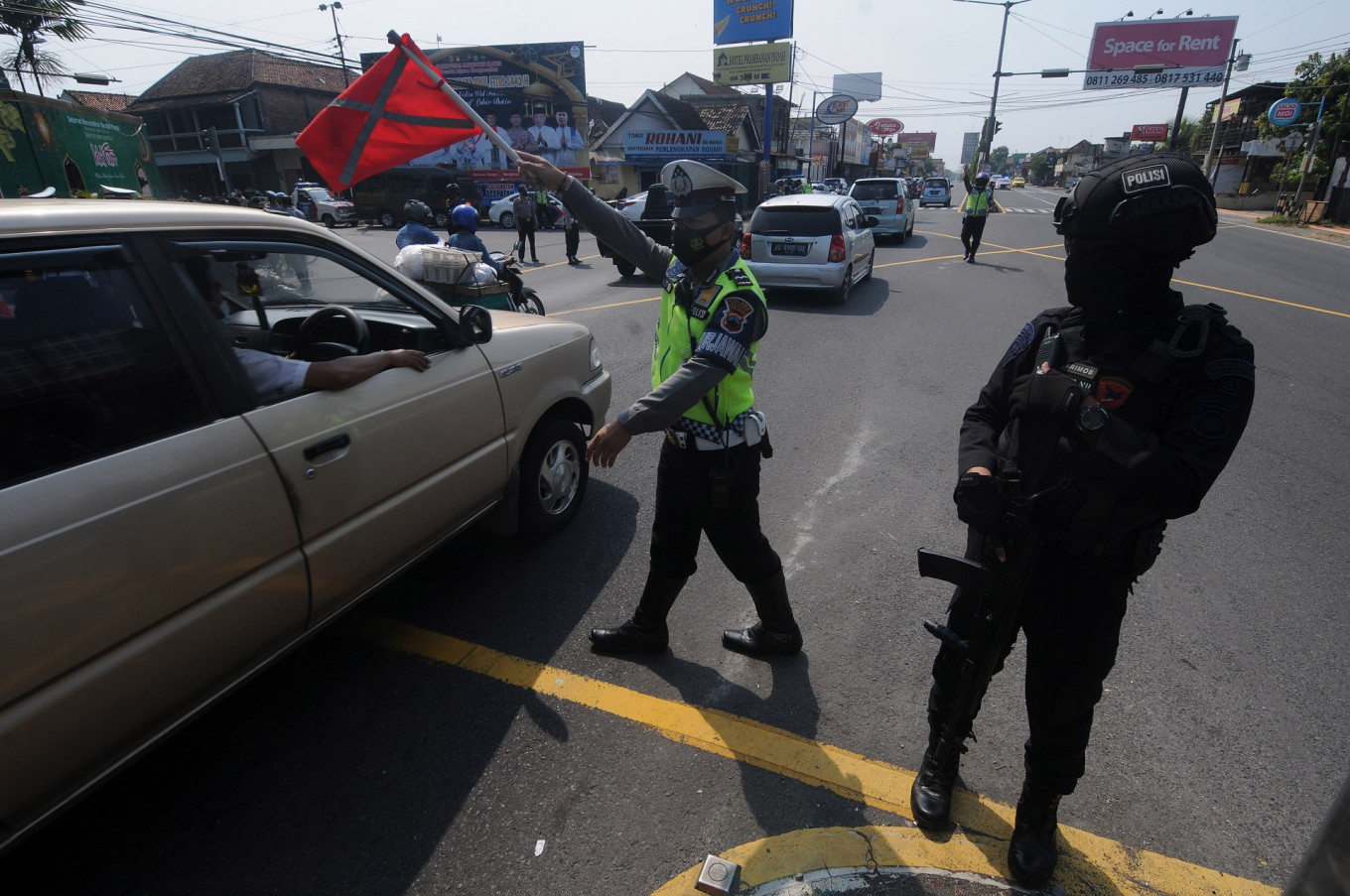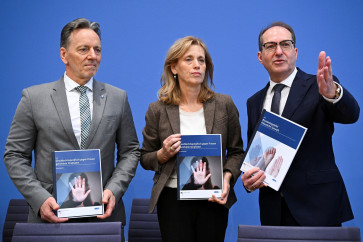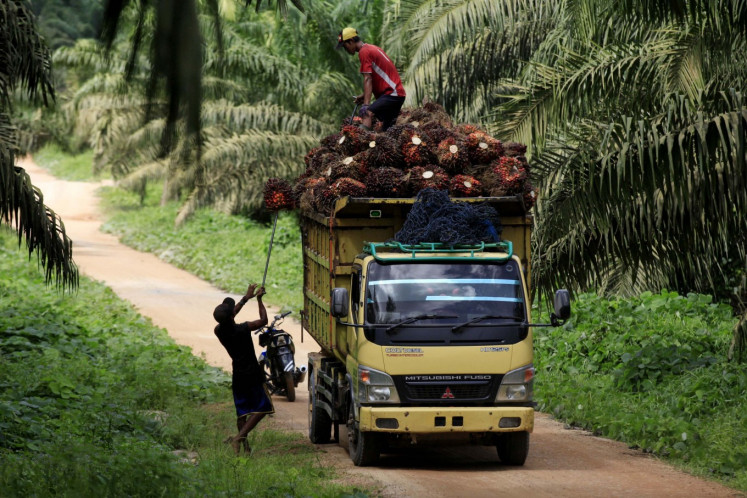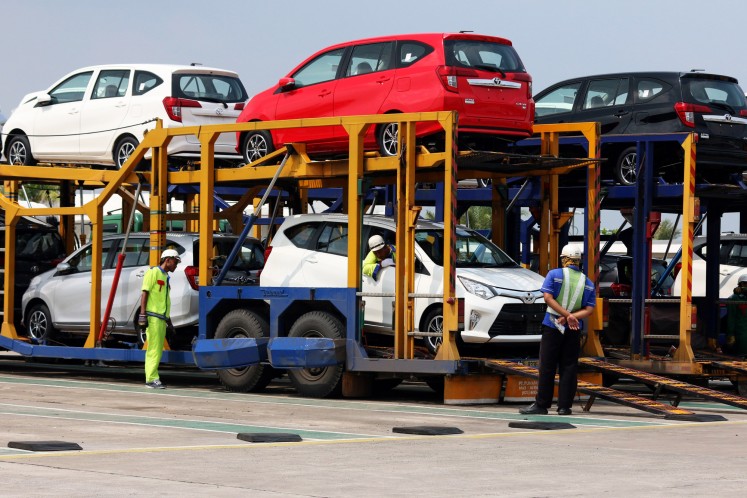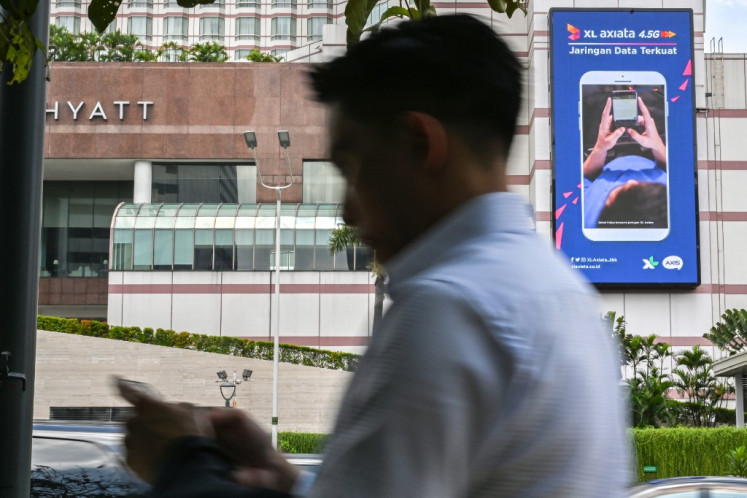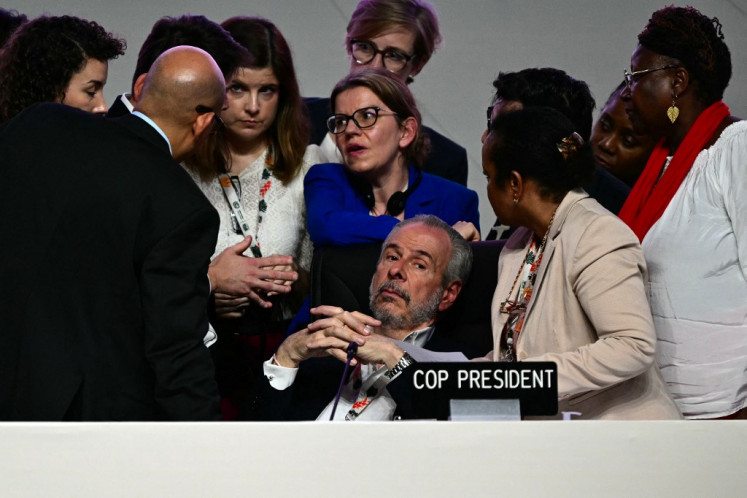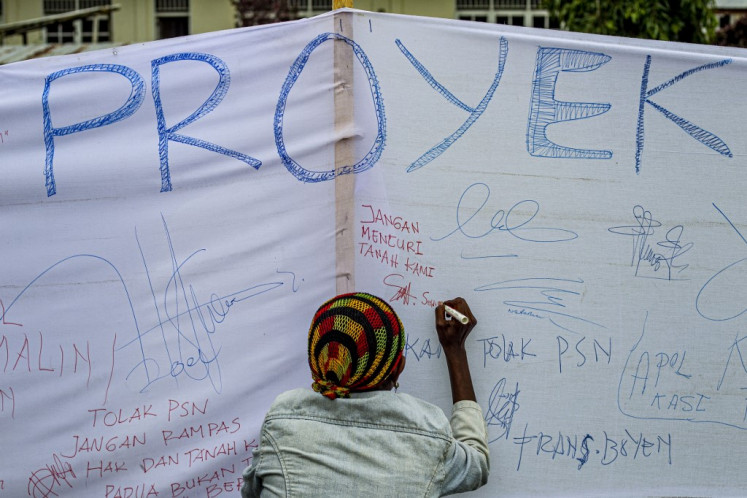Popular Reads
Top Results
Can't find what you're looking for?
View all search resultsPopular Reads
Top Results
Can't find what you're looking for?
View all search resultsParts of Java see post-Idul Fitri case surge
Nine provinces, including Central and East Java, now classified as COVID-19 red zones
Change text size
Gift Premium Articles
to Anyone
C
oncerns are growing over another COVID-19 wave as Central Java and parts of East Java have recorded rising case numbers in the weeks following increased mobility during the Idul Fitri holidays.
National COVID-19 task force spokesperson Wiku Adisasmito announced on Friday that the country saw a 15 percent increase in weekly nationwide cases in the week from May 24 to 30, preceded by a more significant 36 percent increase the week prior, from May 17 to 23.
Central Java experienced the biggest spike, recording 5,560 new cases from May 24 to 30, a jump of 1,879 from the number recorded during the previous week. On Tuesday, there were 11,160 active cases in the province.
Central Java is joined by eight others now classified as COVID-19 red zones, including Riau and East Java.
“I urge all regional heads, particularly those from the nine provinces classified as red zones this week, to increase COVID-19 testing for residents who have just returned from traveling or who were visited by family from outside the region during the last Idul Fitri period,” Wiku told a press briefing on Friday.
Kudus steals nationwide attention
In Central Java, Kudus regency saw an extreme spike in COVID-19 cases due to what Wiku described as "religious tourism", such as grave visits and social gatherings for local tradition kupatan.
The regency saw almost 930 new cases during the week from May 24 to 30, a 30-fold increase from 26 cases during the previous week, and bed occupancy rates in Kudus hospitals now hover around 90 percent.
Kudus recorded 70 new cases on Monday, bringing the total number of active cases to over 1,760.
Read also: Post-Idul Fitri COVID-19 surge imminent with daily case rise, new clusters
Other regencies in the province have also reported an increase in COVID-19 cases that, according to Central Java Health Agency head Yulianto Prabowo, followed the same trend seen during long weekends and extended holidays in the past, including the Christmas and Chinese New Year holidays.
“[The provincial administration provides assistance] according to the needs of each regency, be it PPE, medicines, antigen and PCR test kits, or medical equipment such as ventilators, as well as health workers. We assist them based on what they need,” Yulianto told The Jakarta Post, on Tuesday.
The Central Java Health Agency has started whole-genome sequencing of positive samples from the province, with no foreign variants yet to be found among the local cases, Yulianto said.
In light of the COVID-19 resurgence in the province, Governor Ganjar Pranowo has now decided to evaluate plans for in-class learning initially scheduled for the start of the next school year in July. He said that in-class learning would not be allowed for eight regencies now classified as red zones.
“As predicted, two weeks post-holiday there was an increase. Initially only three regencies [Kudus, Sragen, Brebes] were listed as red zones. But now, there are eight red zones: Kudus, Sragen, Brebes, Demak, Grobogan, Pati, Jepara and Tegal,” Ganjar said on Monday, as quoted by kompas.com.
Authorities scramble to curb transmission in Bangkalan
In neighboring East Java, the regency of Bangkalan on Madura Island is also facing a COVID-19 crisis, with its health system on the brink of collapse.
The Bangkalan administration reported 40 new cases on Monday and 80 on Tuesday, the highest in the province for two consecutive days. This brings the total tally of confirmed cases in Bangkalan to almost 1,900.
“As of this morning, we have prepared mobile PCR [vehicles] to conduct further tracing around Bangkalan Regional General Hospital,” East Java COVID-19 task force spokesperson Makhyan Jibril told the Post on Monday.
“A number of neighborhood units [RTs] there are now listed as COVID-19 high risk areas,” he added.
Two community health centers (Puskesmas) in Arosbaya district have also been closed down, after 20 health personnel were diagnosed with the virus. Makhyan said the figure might still increase, as the regency is conducting further testing.
Read also: Thousands turned back to stop Idul Fitri exodus
In anticipation of the presence of foreign COVID-19 variants, the Bangkalan administration is now focusing on whole-genome sequencing for patients with high viral load. By Monday, samples from 11 cases in Bangkalan had been sent to labs in the province's capital of Surabaya for genome sequencing, with results being expected in two weeks, Makhyan said.
“Don’t underestimate the virus, since based on our findings, most of the cases were most probably from transmission between members of households.”
Despite this, the regency has no plans to impose a lockdown so far. Instead, Bangkalan is persisting with the government’s micro-scale public activity restrictions (PPKM Mikro), which generally are more lenient than the large-scale social restrictions (PSBB) -- seen in many places across the country in the early pandemic.
Read also: Pandemic fatigue ‘the cause’ of growing defiance against COVID-19 rules
Having inspected the regency, East Java Governor Khofifah Indar Parawansa instructed more emergency isolation units to be set up, while also requesting that the Health Ministry provide more medical equipment.
Authorities set up checkpoints along the Suramadu Bridge on Sunday with the intention of preventing the virus from reaching Surabaya and other regions in East Java. Travelers from Madura Island now have to present travel and health documents to be granted access into Surabaya, including a negative COVID-19 test result.
East Java, meanwhile, started to see an increase in daily cases, averaging 230 cases in the first two weeks after the Idul Fitri holidays, to 250 in the following week. The province recorded 389 new cases on Tuesday.
Help from the central government
The COVID-19 surge in Central Java and East Java has attracted national concern, prompting Health Minister Budi Gunadi Sadikin and military and police chiefs to inspect the regions.
Budi similarly concluded that the surge in cases was caused by the increased mobility during Idul Fitri, with Kudus being a popular site for religious tourism and Bangkalan frequently welcoming migrant workers returning from neighboring countries.
Read also: More beds, micro lockdowns: Jakarta braces for post-Idul Fitri virus surge
COVID-19 patients in Kudus and Bangkalan are now being transferred to other referral hospitals in Central Java’s capital of Semarang as well as Surabaya, respectively, in order to relieve pressure from local hospitals in the worst-affected regions.
Additionally, the ministry, in coordination with the Indonesian Medical Association (IDI) has also sent doctors and nurses to bolster the ranks of medical personnel in Kudus and Bangkalan who had previously been exposed to the virus.
According to Budi, Kudus has now received 50,000 vaccine doses, with a shipment of the same amount also scheduled to arrive in Bangkalan soon.
Indonesia is continuing to report an increase in daily infections starting a week after the Idul Fitri holidays in mid-May, averaging over 5,000 cases nationwide, with only a slight decrease to 4,824 cases on June 1. On Tuesday, it recorded 6,294 cases.
Despite the mudik (exodus) ban put in place by the government and the increased security measures at the regions’ borders, at least 1.5 million people traveled to their hometowns for the Idul Fitri holidays.
The national COVID-19 task force has also reported a low level of public compliance with health rules and restrictions since the second week of Ramadan in mid-April as public places were packed with visitors.

